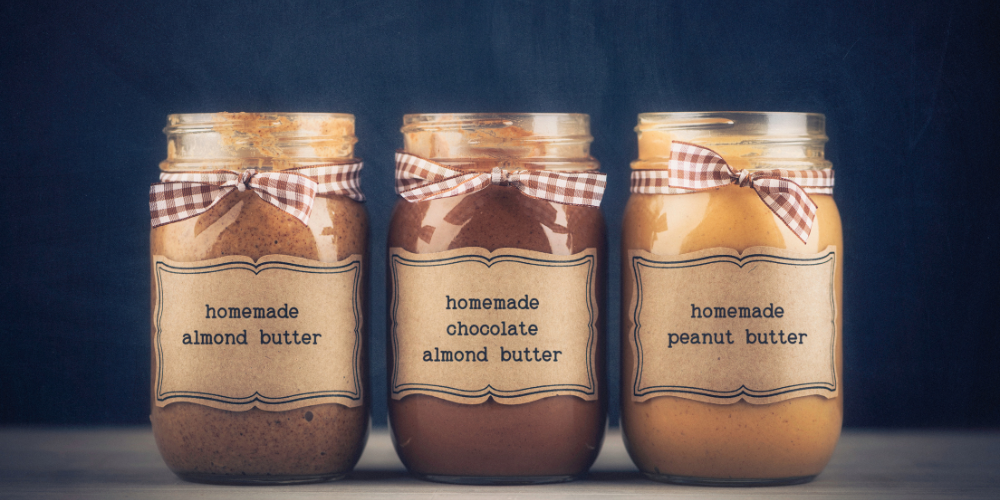
When I first discovered the array of nut butters available beyond the classic peanut butter, I was amazed at the sheer variety. From almonds and cashews to hazelnuts and macadamias, each kind offers a unique taste and a wealth of culinary possibilities. Not only do these spreads provide a delightful twist on the traditional PB&J, but they also bring with them a host of health benefits.
Nut butters are packed with protein, healthy fats, and essential nutrients like magnesium and vitamin E. They’re a heart-healthy choice and can be a part of a balanced diet, helping you stay full and satisfied. Moreover, making nut butters at home allows you to control the ingredients, ensuring that you avoid preservatives and excessive sugars that are often found in store-bought versions.
Creating your own nut butter also means you get to enjoy the freshness that’s hard to find in a jar from the shelf. The rich, creamy texture and the natural oils that give homemade nut butter its unique character are simply unparalleled. For those who’ve never tasted freshly made nut butter, it’s a revelation—the flavors are more vivid, and the nutritional value is at its peak.
Now that you’re acquainted with the wonders of homemade nut butters, you may be wondering how you can start making them in your own kitchen. The key to unlocking this culinary adventure lies in selecting the right nut butter maker to suit your particular needs. In the next section, I will guide you through choosing the ideal appliance, taking into account factors such as capacity, power, and ease of use, to ensure that your nut butter making experience is as smooth as the spread you’ll create.
Choosing the Right Nut Butter Maker for Your Needs
When you decide to make nut butters at home, picking a suitable nut butter maker is essential. Your choice of machine will influence the texture and flavor of your homemade spreads, as well as how much time and effort you’ll invest in the process.
First, think about capacity. If you plan to make large batches, look for a nut butter maker with a sizable hopper. For small, fresh batches, a compact model may be more appropriate.
The power of the machine is another key consideration. A robust motor ensures smooth, consistent results and can handle tougher nuts like almonds with ease.
Durability cannot be overlooked. A sturdy machine may cost more upfront, but it will likely be a worthwhile investment in the long run. Look for products with solid warranties and good customer feedback.
Your search might lead to a comparison between popular brands and models. Find user reviews and pay attention to mentions of performance, longevity, and any possible malfunctions.
Don’t forget about the post-making cleanup. Easy cleaning should be high on your list of priorities. A machine with detachable parts can save you a lot of time and hassle.
An insight into the cleaning process prepares you for the next step: mastering the art of nut butter making. Once you have the right appliance, you’re ready to dive into techniques that transform simple nuts into creamy spreads.
The Art of Nut Butter Making: Tips and Tricks
If you’re eager to unlock the fresh, rich flavors of homemade nut butters, mastering the art of nut butter making is KEY. It not only gives you control over the ingredients but also allows you to tailor your spreads to your exact taste preference.
To start, select raw, high-quality nuts. The type of nut will affect both the flavor and texture of your butter. For example, almonds yield a spread that’s more granular, while cashews create a creamier consistency.
Roasting is an optional but recommended step. It brings out the depth of flavor in your nuts and can make blending easier, especially for tougher varieties like almonds. Aim for a light to medium roast; too much heat can burn the delicate oils and bitter the nut butter.
When it’s time to blend, patience is your best friend. Initially, your nuts will grind into a powder. Over time, they will release their natural oils and evolve into a smooth spread. This could take several minutes, so resist the urge to add oil too swiftly, as you might end up with overly oily butter.
Texture is personal. Some love their nut butter smooth as silk, while others crave a chunkier bite. For a smoother consistency, process longer. If you prefer bits of nuts in your butter, add a handful of chopped nuts during the last few seconds of processing.
Taste-testing is a crucial step in the process. After achieving the desired consistency, try your nut butter and consider adding a pinch of salt, a dash of honey, or even spices like cinnamon to elevate the flavor profile.
Remember to stow your freshly made nut butter in an airtight container to maintain its freshness. Homemade nut butters lack preservatives, so storing them in the fridge is often the best bet for extending their shelf life.
Nut Butter Recipes and Variations to Try at Home
Congratulations on mastering the nut butter maker; it’s a game changer in any kitchen. Now you have the power to transform simple nuts into creamy spreads that can elevate your meals and snacks.
If you’re anything like me, starting with classic almond and peanut butter recipes gives you a solid foundation. These perennial favorites are not only delicious but also provide a dependable base for you to get creative with more adventurous recipes.
Why stop at the basics? Imagine the taste of cashew-cocoa spread on your morning toast or the surprise of pecan-cinnamon nut butter in your smoothie. These unique combinations are not only satisfying to make but also sure to impress anyone who tries them.
Remember, beyond just spreading it on bread, nut butters can be a versatile ingredient. Swirl them into oatmeal, blend them into smoothies, or use them in sauces and baking. The possibilities are as expansive as your imagination.
What’s more, sharing these homemade creations with friends and family can bring joy and perhaps inspire them to make their own. After all, good food is better shared.
At the core of it, making nut butter at home is about embracing simplicity and nutrition. It’s an opportunity to take charge of what you eat and tailor flavors to your palate. So, experiment, adjust, and find your signature spread. Happy crafting!
